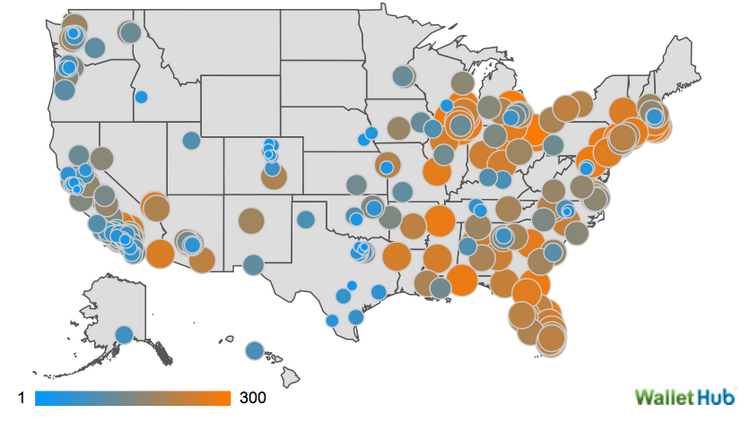Arizona Property Management & Investments
Call For a Free Property Management Quote:
(888) 777 6664
A+ rating with BBB/ Honor Roll List with ADRE
By Nick Timiraos
Wall Street Journal
Wall Street Journal
The U.S. home price rebound has nearly run its course, and Americans
should prepare for several years of home prices that don’t increase
much, if they rise at all, according to a report published by bond
strategists at Bank of America Merrill Lynch.
Most economists expect home prices to rise around 5% this year,
before rising at around 3% over the next few years. Home price increases
in recent years have been driven primarily by supply shortages,
and some economists have said that prices could continue to outpace
income or rent growth if more homes aren’t made available for sale.
To be sure, U.S. home prices have been especially difficult to predict in recent years. Many analysts prematurely called a bottom in 2008 or 2009, and others called for continued declines in 2012, after prices had started rising.
Analysts Chris Flanagan and Gregory Fitter
concede that their view is “well out of consensus.” They say that U.S.
home prices, after being undervalued relative to household incomes by
around 6% at the end of 2011, have now rebounded to levels that are 9.7%
overvalued. Their model uses the S&P/Case-Shiller home-price index.
They estimate that home prices will rise another 3% annually in each
of the next two years, well below the 9.5% annualized growth rate since
the end of 2011, when the market hit bottom. That would leave prices
around 12% above the “fair value” level implied by household incomes.
The model then forecasts modest declines in the following years,
resulting in net annualized home-price gains that are flat through the
middle of 2022.
So does this mean U.S. housing markets are in another bubble? If it
is, it’s much less pronounced than in 2006, when home prices peaked at
levels that were overvalued by nearly 59%, resulting in price declines
of nearly 35% over six years.
Messrs. Flanagan and Fitter say that the regulatory framework enacted
since the financial crisis in 2008 should largely prevent a return to
the loose-lending standards that inflated the housing bubble. Against
that backdrop, flat home prices between 2016 and 2022 “seems to us to be
a fantastic outcome and exactly what policymakers had hoped for when
establishing the new regulatory framework,” they write.
They also point to recent home-price indexes that show that the pace
of increases has already slowed, suggesting that the post-crisis boom in
home prices witnessed over the last two years “is most likely over.” A
new period of “exceptionally low home-price growth” in which prices will
rise by just 1% a year, on average, over the next eight years “most
likely has started,” they write.
Why Arizona real estate may not be a good economic bet in 2016
If I were the
type of person who extrapolated from data to form a conclusion I wished
would be true I’d say that there will be much more money for Arizona
entrepreneurs in the future than there has been in the past.
The reason is
that an economic forecast for 2016 I attended last month predicted real
estate would be a lousy investment in the foreseeable future. And if Elliott Pollack
is saying that – he of the endlessly optimistic forecasts since the
'80s – it must be grim for the money in Arizona that knows no other
investment.
According to
Pollack, next year will be just like this year. There’s no irrational
exuberance and the debt ratio is low, as low as it was in the 1980s.
Inflation is low, and oil prices are low. We are now down to importing
only 21 percent of our oil, compared to 65 percent in 2005, which means
as a nation we’re saving about $420 million a day on oil.
The dollar is
stronger, mostly because the U.S. is the prettiest house on an ugly
block. In times of crisis, people flee to the dollar, and that means
foreign goods are cheap here, but our goods are expensive overseas. It’s
a good time to go on an international vacation.
So there’s no recession coming.
However, the
remaining debts are auto debt and student loans. In manufacturing, which
largely means automobiles, inventory to sales ratios are out of line,
which means cutbacks in manufacturing even though the average age of a
car in the U.S. is 11.5 years.
For the first
time in 40 years people have had to live within their incomes, because
there are no bubbles, either in the stock market or housing, which would
allow them to feel wealthy.
Moreover, the
number of people in their peak earning years (45-54) is decreasing and
won’t increase again until 2023. Only 26 percent of people 18 to 34 are
married, so millennials won’t get to the suburbs with their kids until
the mid 2020s.
Predictions for the 2016 Housing Market
Arizona Property Management & Investments
Call For a Free Property Management Quote:
(888) 777 6664
A+ rating with BBB/ Honor Roll List with ADRE



